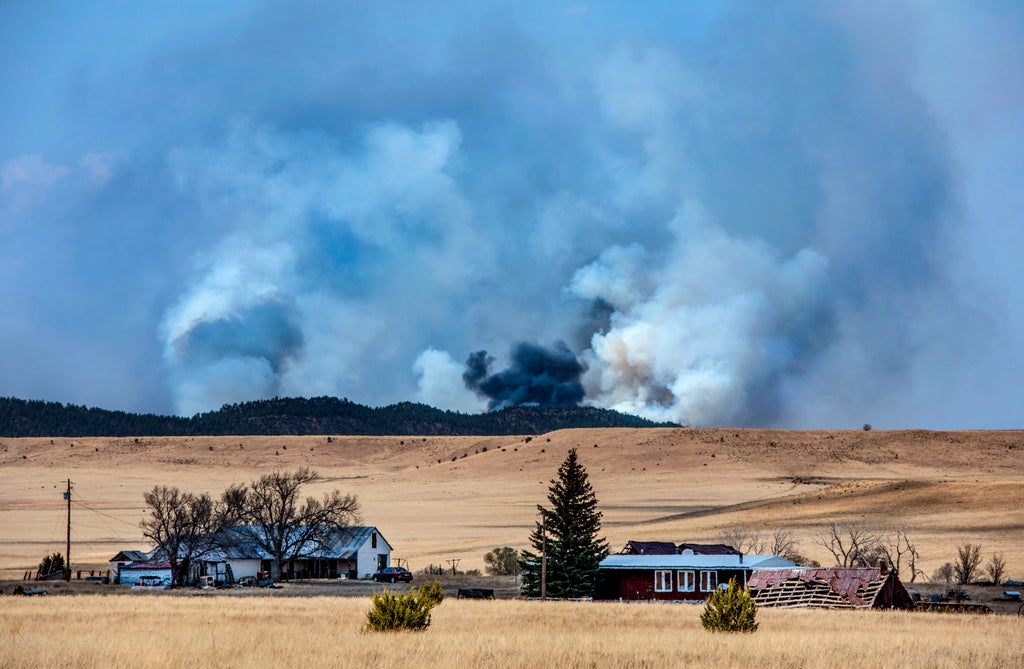
From the Southwestern U.S. to the southern High Plains, forecasters are warning that more strong winds and low humidity will challenge fire crews over the coming days.
More strong winds and low humidity levels are on tap for the coming days, prompting firefighters in drought-stricken New Mexico to cut away brush and burn out any extra fuel Wednesday in an effort to keep the flames of what has become the largest wildfire burning in the U.S. from reaching homes that are still in its path.
The perimeter of the fire stretches more than 180 miles (290 kilometers). It has moved across meadows and up mountainsides, forcing residents from several villages to flee as the flames consumed family ranches, a community center and other structures.
Authorities said Wednesday they continue to work on damage assessments but haven't been able to access some areas that are still hot.
“Fire is creeping all over the place,” San Miguel Deputy County Manager Jesus Romero said, noting the danger has yet to pass and it's unclear when people will be allowed back into the area.
The Southwest has been bearing the brunt of large fires, with five incident management teams assigned, according to the National Interagency Fire Center. One complex incident management team was overseeing a large fire in Nebraska.
More than 200 firefighters in that state were battling a prairie fire that has been burning since last week. About 65 square miles (168 square kilometers) of mostly grasses and farmland have been blackened, several homes have been destroyed and at least one person was killed.
The fire was about three-quarters contained going into Wednesday, and crews were hopeful that a storm system expected to push through the area would bring much-needed moisture. While rain would be welcomed, there were also concerns that any lightning could spark new fires and gusts could spread existing fires.
Meanwhile, crews in New Mexico were most worried about dry thunderstorms. No moisture was predicted, just erratic winds that could fan flames and ground the air tankers and water-dropping helicopters that have been aiding from above.
In Arizona, crews on Wednesday worked to contain two major wildfires, with firefighters gaining ground on containment of a blaze in the Prescott National Forest after winds on Tuesday pushed the fire outward. Near Flagstaff, crews patrolled burned areas of a different large fire and looked for hot spots amid milder weather.
Nationally, large fires have burned more than 1,688 square miles (4,372 square kilometers) this year, putting the U.S. on track to far outpace the 10-year average.
The pressure on firefighters is not likely to let up anytime soon. Climate outlooks indicate likely below normal precipitation from Texas through the southern Rockies and Great Basin, with above normal temperatures likely across much of the U.S into summer.







